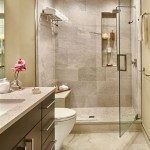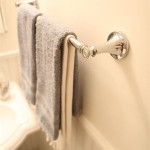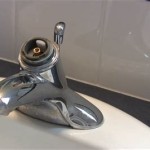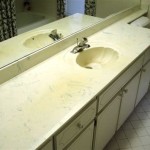How To Stop Black Mould On Bathroom Ceiling
Black mold, also known as Stachybotrys chartarum, is a common problem in bathrooms, especially on the ceiling. It thrives in damp, humid environments and can cause a variety of health problems. Not only does it cause aesthetic damage, it can also impact the health of those in the home. Left unchecked, black mold can trigger allergic reactions, respiratory problems, and even more serious health issues. Thankfully, preventing and removing black mold on bathroom ceilings is achievable with the right techniques and consistent maintenance. This article will delve into the causes, prevention methods, and removal techniques for black mold on bathroom ceilings.
Understanding the Causes of Black Mould
The presence of black mold on the bathroom ceiling is a clear indication of a moisture problem within the bathroom space. Understanding the root causes of this moisture is crucial in effectively eliminating the mold and preventing its recurrence.
The primary cause of black mold growth is excess moisture. This moisture can stem from various sources including:
- Poor ventilation: Lack of proper air circulation allows moisture to linger in the bathroom, especially after showers or baths.
- Leaking pipes: Cracked or leaking pipes inside the bathroom walls or ceiling can result in a steady supply of moisture, creating a breeding ground for mold.
- Condensation: Warm, moist air from showers and baths can condense on the cooler surfaces of the bathroom ceiling, especially if the temperature difference between the air and the surface is significant.
- Lack of exhaust fan: An exhaust fan is essential for removing moisture-laden air from the bathroom. A malfunctioning or absent exhaust fan can drastically increase the risk of mold growth.
Preventing Black Mould Growth
The most effective strategy against black mold is prevention. By addressing the root causes of moisture buildup and implementing preventative measures, you can create an environment that is less hospitable to mold growth. Here are some effective prevention strategies:
- Proper Ventilation: Ensure your bathroom has adequate ventilation. This can be achieved through an exhaust fan that is properly sized for the room and runs for a sufficient period after showering or bathing. Consider opening a window to further promote air circulation.
- Regular Cleaning: Regularly cleaning the bathroom surfaces, including the ceiling, helps remove accumulated moisture and any potential mold spores. Use a mild bleach solution or a commercial mold-killing cleaner.
- Minimize Moisture: Take steps to minimize moisture buildup in the bathroom. Wipe down shower walls and floors after use, use a squeegee to remove condensation from shower doors and windows, and keep the bathroom door open after showering or bathing to allow air circulation.
- Repair Leaks Promptly: Address any leaking pipes or faulty plumbing immediately. Even a small leak can contribute to the growth of mold.
- Use Dehumidifiers: If humidity levels are consistently high, a dehumidifier can help remove excess moisture from the air, lowering the risk of mold growth.
Removing Black Mould
If black mold has already taken hold on your bathroom ceiling, it's essential to remove it promptly and safely. Removing black mold requires caution as it can be harmful to your health, particularly if inhaled. Always wear protective gear including a respirator mask, gloves, and eye protection when working with mold.
- Isolate the Area: Before attempting to remove the mold, isolate the area. This means closing off the affected bathroom to prevent the spread of mold spores to other parts of the house.
- Scrub the Affected Area: Use a stiff-bristled brush and a solution of bleach and water (1:10 ratio) to scrub the affected area thoroughly. Be sure to wear protective gear and ventilate the room well.
- Dry Thoroughly: After scrubbing, dry the area completely. This can be done with a fan or other drying equipment. Ensure the area is completely dry before proceeding to the next step.
- Consider Professional Help: For extensive mold growth or if the mold has penetrated into the ceiling material, it's best to consult a mold removal professional. They have the expertise and equipment to safely and effectively remove the mold and prevent its return.
By understanding the causes of black mold and following these preventative and removal techniques, you can keep your bathroom ceiling free from black mold and create a healthier environment for yourself and your family. Remember that consistent maintenance and prompt action are key to preventing this persistent problem.

My Bathroom Ceiling Has Black Mould Growing On It What Should I Do

How To Stop Black Mould

Ceiling Mold Growth Learn The Cause And How To Prevent It Environix

Mold On Bathroom Ceiling How To Clean Off

My Bathroom Ceiling Has Black Mould Growing On It What Should I Do

Mold On Bathroom Ceiling How To Clean Off

Black Spots On The Bathroom Ceiling Flood Water Damage Honolulu Oahu Hawaii Md Restoration

Bathroom Ceiling Mold Removal When To Clean Call Branch Environmental

Ceiling Mold Growth Learn The Cause And How To Prevent It Environix

A Guide To Preventing Mould On Your Bathroom Ceiling Igloo Surfaces
Related Posts







